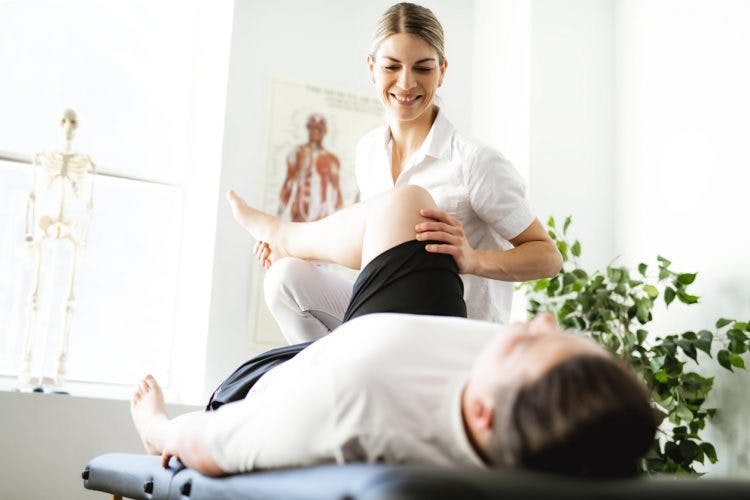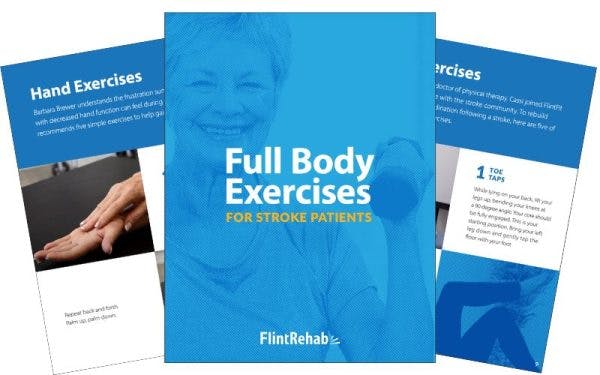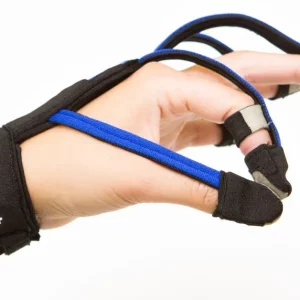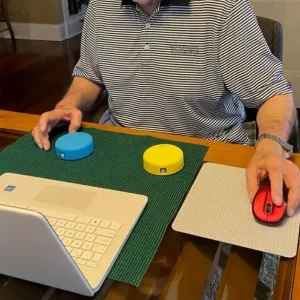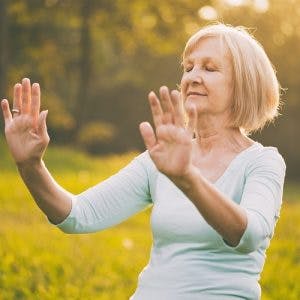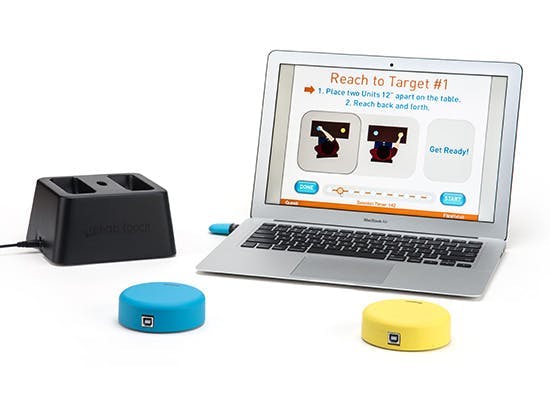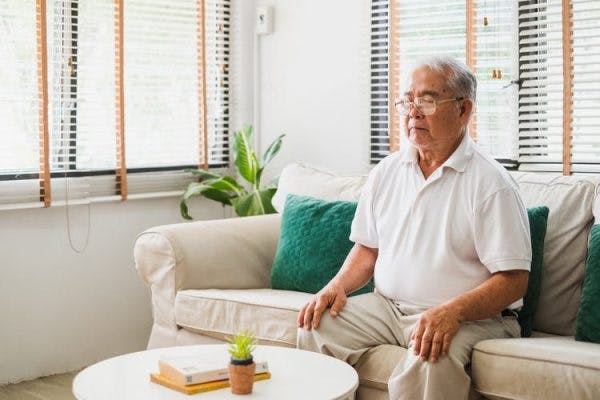Exercise is the foundation of the healing and recovery process for stroke patients. This is true for all stroke survivors, including those experiencing paralysis after stroke. This highlights the importance of following a dedicated rehabilitation program to promote recovery and regain function, helping you return to the activities you love.
If you feel unsure about your chances of recovery from post-stroke paralysis, know that all survivors of stroke can make improvements in function and quality of life through dedicated rehab. This includes survivors experiencing hemiparesis or hemiplegia, which is weakness or paralysis of one half of the body after stroke.
In this article we will discuss the difference between active and passive exercise and why both promote paralysis recovery after stroke. We will also review examples of exercises you can perform independently to maximize mobility and strength.
Active vs Passive Rehab Exercises for Paralysis Recovery
Paralysis is experienced by many stroke patients and can have a negative impact on daily activities, leading to decreased independence and reduced participation in social activities. Through active and passive exercise, however, survivors can restore function and learn new movement strategies to regain this independence.
Active exercise entails performing a movement on your own while passive exercise involves assisting your affected limbs through a movement. Many rehabilitation programs for stroke patients with paralysis will begin with passive exercise, especially in the acute stages of recovery.
Passive exercise assists with paralysis recovery because it involves using your non-affected side to move your paralyzed muscles. In some cases, passive exercise will require the help of a caregiver, therapist, or family member to move the affected arm or leg though pain-free range of motion. This stretches tight muscles, maintains joint mobility, and can promote improved long-term outcomes for stroke patients.
Passive exercise is an excellent starting point and, as stroke recovery progresses, survivors are often able to advance to more active exercises with the guidance of their rehab team. Any movement sends signals to the brain to help promote recovery, which we will discuss next.
Passive Exercise Helps Post-Stroke Paralysis
Passive rehab exercise promotes paralysis recovery because it activates neuroplasticity, the mechanism your brain uses to rewire itself after injury. Stroke results in areas of tissue damage within the brain, inhibiting the brain’s ability to send the signals to the muscles that initiate movement. This is what leads to paralysis and other secondary effects of stroke.
Neuroplasticity, however, allows other nonaffected parts of the brain to create new pathways for these skills. You can activate neuroplasticity through repetition and constant awareness of your affected side. Every time you draw attention to your affected limb or practice a specific skill, you send signals to the brain and promote the strengthening of these pathways or connections.
Although passive exercise may not feel like you’re “doing it yourself,” this stimulation of sensation and movement activates neuroplasticity. Perhaps the most important factor for recovery from paralysis after stroke is repetition, or massed practice.
High repetition of any activity helps rewire the connections needed to perform that skill. Therefore, if you want to regain movement, then you need to practice stroke exercises repetitively on a daily basis.
What to Expect When Starting Passive Exercise for Paralysis
In addition to promoting the recovery of function, passive exercise can prevent the development of further complications for stroke patients with paralysis. Decreased mobility can lead to muscle shortening or contractures, increased spasticity, and poor cardiovascular health. The best way to combat this is to move your body and engage in daily exercise, even if this exercise is passive.
Progress can be very slow, and it is common for patients with paralysis after stroke to experience setbacks or periods where recovery seems to plateau. This is why it is important to set small and large goals, keep track of all improvements, and celebrate little victories.
When survivors start to notice muscle twitches or tiny movements beginning to return, this can motivate them to continue with their exercises. For example, one stroke survivor started to see twitches in his paralyzed arm after three weeks of exercising with FitMi home therapy. Consistency, dedication, and hope are all necessary pieces of an exercise program for stroke patients with paralysis.
Exercise for Stroke Patients with Paralysis
Passive exercises can be adapted from most active exercises by assisting your affected muscles through the movements. To help demonstrate this, let’s review one example of an exercise for stroke patients with paralysis. This exercise, called a “Punching Movement,” targets the entire arm and can be modified to fit any stroke recovery level.
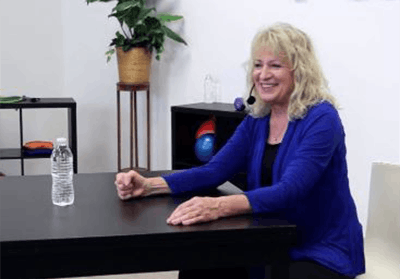
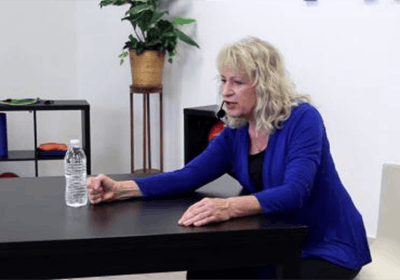
To perform this exercise, slide your arm forward across the table to ‘punch’ an object, and then pull your arm back, using your other arm to assist with the movement. This can also become an active exercise by initiating the movement with your affected arm, working to push through your whole arm, including your shoulder blade. As you become stronger, you may not need as much (or any) assistance from your unaffected limb.
This is just one example of how an exercise can be modified to fit your individual abilities. Like active exercises, passive exercises can help restore movement after post stroke paralysis by encouraging the strengthening of pathways between your brain and muscles.
Mental practice is an excellent addition to passive exercise and involves imagining (or visualizing) yourself doing the movements you want to get better at. This helps promote neuroplasticity when performed alongside exercise, activating the same areas of the brain needed to perform the physical skill.
To practice this, spend time visualizing yourself doing the Punching Movement above. Then, after your visualization, practice the movement in real life. While mental practice alone will not yield results, stroke patients who are affected by paralysis can benefit from combining this technique with passive exercises to increase neuroplasticity and promote greater recovery of function.
Paralysis Recovery for Stroke Patients
Exercise is the foundation of paralysis recovery after stroke. Practicing passive rehab exercises on a daily basis helps provide the brain with the stimulation it needs to heal and can help prevent additional complications. As you become stronger, you may be able to transition to more active and resistive exercises.
The more consistent you are with daily exercise, the better your chances of recovery will be. It is important to be patient with your results and celebrate small signs of recovery. We hope this article has helped highlight the importance of exercise for stroke patients with paralysis. There is always hope for improvement, so keep up the hard work and continue to persevere on the road to recovery.

